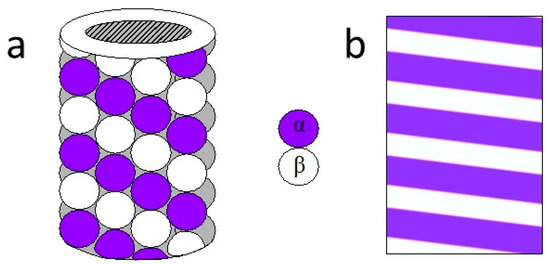Write4U
Valued Senior Member
Continuing our journey.
Microtubules as quantum systems?
............
New results about microtubules as quantum systems
Authors; Matti Pitkanen
Abstract
Microtubules as quantum systems?
............
Could DNA sequences code for TQC programs? (as implied in the publication “DNA as Topological Quantum Computer” by M. Pitkanen,, 2010)
Microtubules are reported to have 8 resonance peaks for AC stimulation (kilohertz to 10 megahertz), which appear to correlate with various helical conductance pathways around the geometric microtubule lattice.
https://www.academia.edu/17199736/Microtubules_as_Quantum_Systems?email_work_card=abstract-read-moreThe explanation is proposed in terms of current pathways which are identified topological qubits, still why not to speak about braid strands or specify what topological qubit means if one is speaking about TQC?
New results about microtubules as quantum systems
Authors; Matti Pitkanen
Abstract
The latest news in quantum biology is the observation by the group led by Anirban Bandyopadhyay about the detection of quantum vibration in microtubule scale - their lengths vary up to 50 nm. If this observation can be replicated, one can speak about a breakthrough in quantum consciousness.
The findings reported in an earlier talk of Bandyopadhyay give support for the general TGD inspired view about topological quantum computation (TQC) and allow for a rather detailed model in the case of microtubules. The idea is that ux tubes form a 2-D coordinate grid consisting of parallel ux tubes in two different directions. Crossing points would be associated with tubulins and the conformational state of tubulin could dene a bit coding whether the braid strands dening coordinate lines are braided or not (swap or not). In this manner any bit pattern at the microtubule denes a particular TQC program.
If also conformations are quantum superposed, one would have "quantum-quantum computation". It however seems that conformation change is an irreversible chemical reaction so this option is not feasible.
The TGD-inspired modification of the proposal in terms of ux tube coordinate grids makes possible TQC architectures with tubulin dimers dening bits dening, in turn, TQC program looks rather natural. Coordinate grids can be xed on the basis of the experimental findings and there are 8 of them. The interpretation is in terms of different resolutions.
The grids for A and B-type lattices are related by 2 twists for the second end of the basic 13-unit for microtubule. An attractive interpretation of the resonance frequencies is in terms of phase transitions between A and B type lattices. If A-type lattices can be generated only in phase transitions induced by AC stimulus at resonance frequencies, one could understand their experimental absence, which is a strong objection against Penrose-Hameroff model.
https://dnadecipher.com/index.php/ddj/article/view/6/10TGD suggests also a generalization of the very notion of TQC to 2-braid TQC with 2-D string world sheets becoming knotted in 4-D space-time. Now qubits (or their generalizations) could correspond to states of ux tubes dening braid strands as Penrose and Hamero seem to suggest and the emergence of MTs could be seen as an evolutionary leap due to the emergence of a new abstraction level in cognitive processing.








